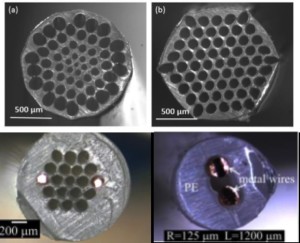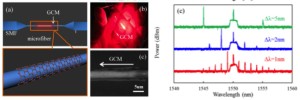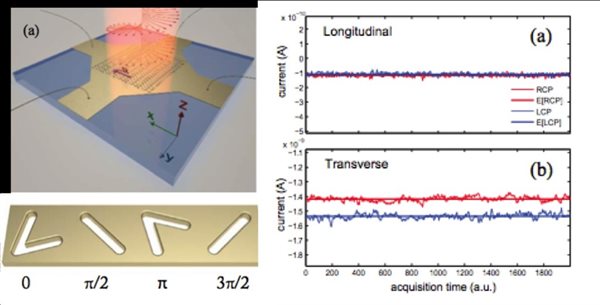By Howard Lee
I started my day by attending some interesting posters in the morning. Most of the topics in the poster session today are mainly related to quantum optics, ultrafast phenomena/laser, and optical sensing. In the afternoon, I attended the “plasmonic metasurface” session and “nonlinear fiber effect” session, followed by the celebration of the International Year of Light and the last plenary session of the conference by Prof. Shuji Nakamura (UCSB, Nobel Prize Winner in Physics 2014) and Prof. Miles Padgett (University of Glasgow).
It was an excellent day filled with new findings and ideas. Here, I would like to highlight some poster and talks that I found particularly interesting:
Poster session:
Graded Index Porous Optical Fibers – Dispersion Management in Terahertz Range
Hybrid Metal Wire-Dielectric THz Fibers: Design and Perspectives
(JW2A.55, JW2A.56)
(Andrey Markov et al., Ecole Polytechnique de Montreal, Canada)
Terahertz radiation is the region of EM spectrum between the microwave and the infrared region. It is the least developed spectral range within the EM spectrum. However, recent developments found that the generation, detection and routing of the THz radiation is critically important for development of material characterization, security imaging and biochemical detection. Therefore, efficient guiding of THz radiation is one of the important factors for these applications.
Andrey Markov uses the graded index porous “microstructured” optical fiber to guide and to engineer the dispersion of the pulse propagation in THz regime. In addition, they also demonstrates the integration of metal-wire into the optical fiber to design a hybrid fiber for reducing the loss and controlling the dispersion and polarization. This work opens up new directions on making an efficient THz waveguide that is currently not well developed.

Technical session:
Graphene Coated Microfiber For Cascaded Four-Wave- Mixing Generating
(FW4D.6)
(B.C. Yao et al. , University of Electronic Science and Technology of China and City University of Hong Kong)
Graphene, a 2D material with honeycomb crystal lattice has attracted a lot of interest because of its unique electronic and optical characteristics, particularly the nonlinearity of the material. However, how we use the unique properties of graphene and integrate into a real device application is an important research task nowadays. The speaker of this talk presented a new way to study the nonlinear effect of graphene by using tapered micro-fiber. They fabricated graphene coated microfiber and studied the power spectrum by launching a high power pulse into the dielectric core of the fiber. By adjusting the detuning, they are able to observe the cascaded stokes and anti-stokes peaks. Their results open up a novel way on utilizing the advantages of graphene and fiber optics that would be useful for developing comb filter, pulse laser and other all-optical devices.

Photon Spin Induced Collective Electron Motion on a Metasurface
(FW4E.1)
(Xingjie Ni et al., UC Berkeley)
Metasurfaces are typically arrays of subwavelength anisotropic light scatters (optical antennas) where each element is designed to control the phase and amplitude of the transmitted, reflected, and scattered light. Recently, studies show that metasurfaces could be used to enhance photon orbital momentum and manipulate spin-orbit interactions and to investigate the photonic spin Hall effect. Xingjie Ni presented here their new finding on photon spin that is induced by the electron motion of the metasurface (where the four edges of the metasurface are connected to external metal pads for electric current detection—see figure).

They measured the electric current transverse to the phase gradient when the metasurface is illuminated by circularly polarized light. Their results clearly show that the collective electron motions inside the metasurface is affected by the input photon spin states. This is an important and direct study of the photon spin drag effect and would be useful for novel manipulation of photon spin and orbital angular momentum using ultrathin metasurface.
The time is running fast that there is only two days left for the conference. I hope you will enjoy the rest of the conference, particularly the post-deadline session on Thursday evening will be one of the highly recommended event of the conference. See you there!
Posted: 15 May 2015 by
Howard Lee
| with 0 comments